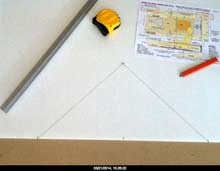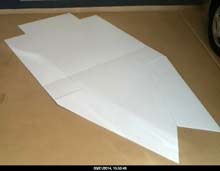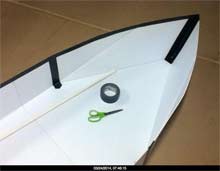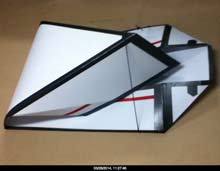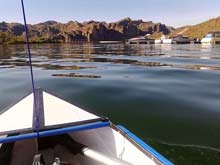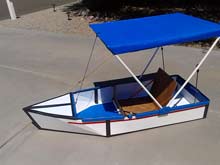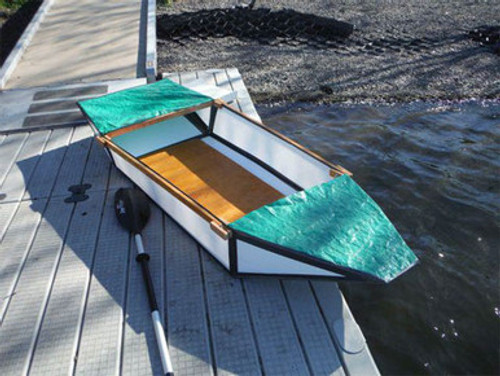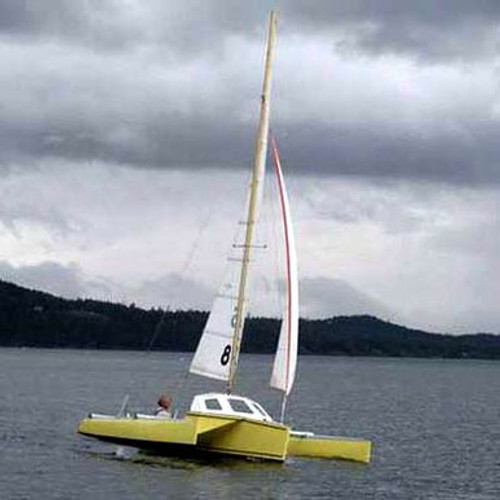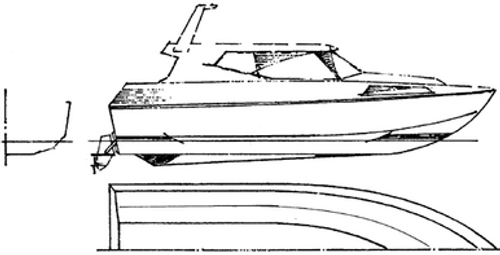There are 4 + different hull types defined on these plans. Each has it attributes, and shortcomings. All are for a single occupant, and all have a maximum capacity of about 220 pounds, including all gear. The intent of these designs is to provide a lightweight, easy to build small boat, that will fit in any vehicle for transport, and is inexpensive to construct, maintain and operate. Let's take a look at them.
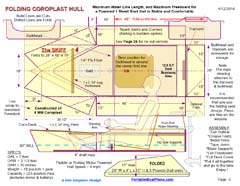 Skiff | 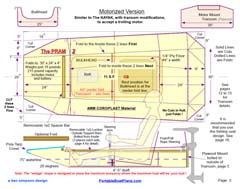 Pram |
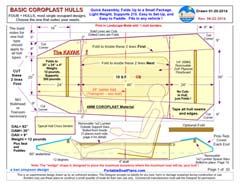 Kayak | 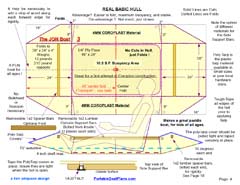 Jonboat |
As you can see, these are fairly simple designs, all intended to be very portable and durable. The Coroplast material is very lightweight, and the bare hulls each weigh only about 5 pounds. Add supports, a floorboard and a seat, and the weight is still less than 20 pounds. The KAYAK could easily be backpacked, with a folding floorboard.
I had time to put together some information on my latest Coroplast boat designs, and construction techniques. The plans and photos describe various hull shapes and assemblies. Coroplast, being a corrugated plastic material, has certain advantages, and disadvantages, for small boat use. For instance, it is waterproof, easy to form, and does not require painting, as the color is molded in, and it's no more expensive than a sheet of plywood. A big disadvantage is that it is very difficult to bond anything to it, and to itself. I have found, after much experimentation, that 100% Silicone Adhesive is the best product for this purpose, but it still needs a mechanical fastener (screws) for secure backup. That's what these plans are all about, to explain the options, and to let the builder select what is best for their application, and skill level. All hulls are made from a standard 4' x 8' sheet of 4 MM Coroplast. A couple of the designs require 2 sheets, such as the Elongated Power Boat, and the Coro-Canoe. Some hulls require no cutting of the Coroplast, just creasing and folding, plus Tough Tape assembly. So you see, the original concept of an easy to assemble and inexpensive folding plastic boat design has evolved into a variety of styles and sizes that should appeal to a wider spectrum of small boat builders. These are not for the traditional types, but rather those that are intrigued by the possibilities the material has to offer, lightweight being the first. Most bare hulls weigh 5 pounds, and only 15 pounds completely assembled. I know of a Coro-Sailboat being constructed in England, and of various Coro-Prams that are already in friendly waters around the globe. As I stated on the last page of the plans, "Coroplast boats are low in cost and high in pleasure. Join the revolution today !"
don't forget to visit www.PortableBoatPlans.Com for new designs and updates.
Happy Boating!
Ken Simpson, Designer



